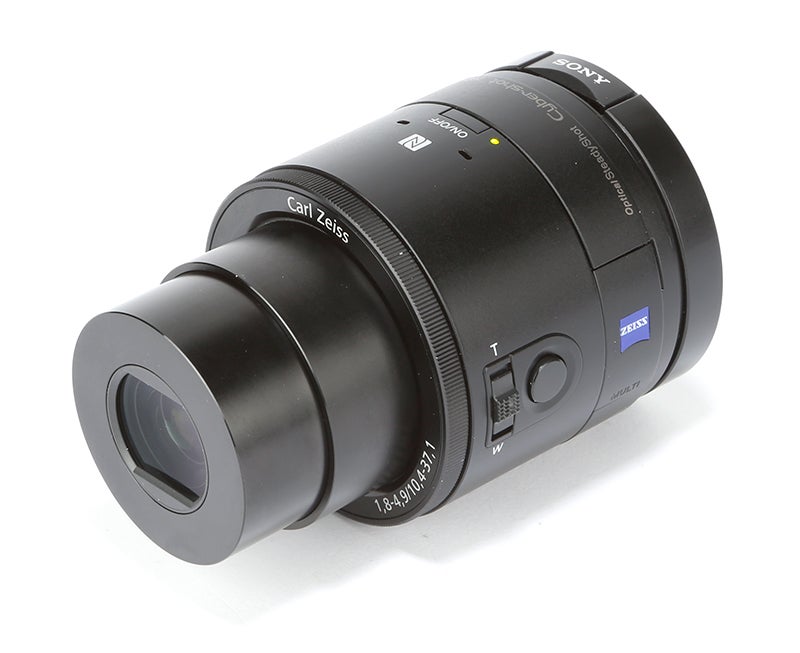Sony QX100 Review - The Sony QX100 was released as part of a pair of now models which, along with the Sony QX10, are aimed at transforming smartphone photography. Read our Sony QX100 review to find out whether it's successful or otherwise
Sony QX100 Review
Performance
Sony QX100 and QX10 Review – Performance

Unlike a normal camera that you switch on and shoot with a few seconds later, the QX cameras are slower to setup, especially if you’re connecting your smartphone to the device via Wi-fi and not using NFC (Near Field Communication) to pair the devices together by touch.
If your smartphone is NFC enabled you can simply touch the QX against your phone to initiate a connection and launch the Play Memories app, but it still takes between 5-10 seconds until the app is open and synced with the QX before an image can be taken. Of course by this time any spur of the moment shots that you may have wanted to capture could be missed.
Use the QX10 or QX100 with a smartphone that doesn’t support NFC, such as an iPhone for example, and the setup time takes longer. Firstly you’ll need to find the QX’s Wi-fi network and connect to it using the password that’s hidden away behind the battery. This can take up to twenty seconds and even after the connection has been made it takes a further few seconds to load the Sony Play Memories app and reveal the live feed onscreen.
After you’ve entered the Wi-fi password once it’ll be remembered by the smartphone so you won’t need to enter it again, however the fastest time we could shoot an image after connecting and loading the app was still 17seconds. When the Play Memories app loads your smartphone becomes the viewfinder, shutter and centre around which the QX’s settings are changed.
The focus point can be repositioned by tapping any area of the screen, but we did find the QX10’s autofocus performance to be fractionally faster than the QX100’s, which had a tendency to hunt for focus more frequently in low-light conditions.
Shooting modes
Whereas QX10 only lets you choose from three automated modes, these being Intelligent Auto, Superior Auto and Program Auto, the QX100 offers all of the above plus an Aperture Priority Shooting mode to allow users to make use of the fast f/1.8 aperture. Regrettably there’s no manual control of ISO, but Exposure compensation is available, with the QX10 offering +/-2EV and the QX100 providing +/-3EV.
The Play Memories app interface couldn’t be easier to navigate. A basic arrangement of icons are positioned around the live feed, and from the main menu you’re given the choice of saving a 2MB image or full resolution version directly to the smartphone. With high-res files automatically being saved to the Micro SD card loaded in the QX, it seems unnecessary to clog up the memory of a smartphone, so we ensured the size of our review image was set to 2MB.
Neither of the QX cameras put in faultless performance on test.
There were the odd occasions where the app would unexpectedly crash, resulting in no other option but to close the app and reload it again before another image could be taken. There’s also a lag between what the camera sees and the translation back to the smartphone’s screen. Slow movements of the QX cameras didn’t have a big affect on what was viewed on the screen, but faster movements resulted in more lag, and in the worst case the app crashing.
The same could be said when recording HD video, leaving you to more or less guess what you’re shooting if the subject moved quickly through the frame. On the subject of HD video, both QX models shoot good movies at 1440×1080 resolution and we were impressed by how well the in-built microphone picked out distant noise.




